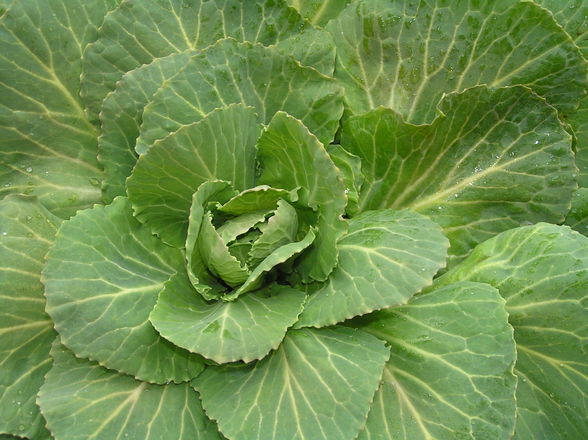Growing cabbage aquaponically combines hydroponics and aquaculture, creating a symbiotic system where fish waste provides nutrients for the plants, while the plants help filter and purify the water for the fish. Here are some steps to consider when growing cabbage aquaponically:
- Set up the Aquaponic System: Start by designing and setting up an aquaponic system that includes a fish tank or pond, a filtration system, and a grow bed for the cabbage plants. The fish tank should provide enough space and water volume to support the desired fish species.
- Choose Fish and Cabbage Varieties: Select fish species that are suitable for aquaponics, such as tilapia, trout, or catfish. Research the requirements and optimal conditions for the chosen fish species. For cabbage, choose varieties that thrive in your growing conditions and are well-suited to hydroponic or soilless cultivation.
- Establish a Nitrogen Cycle: As fish produce waste (ammonia), it needs to be converted into nitrates, which serve as nutrients for the plants. This conversion is accomplished by beneficial bacteria in the aquaponic system. It’s important to establish and maintain a stable nitrogen cycle to ensure a healthy balance between fish, bacteria, and plants.
- Plant Cabbage Seedlings: Start cabbage seedlings separately in a suitable growing medium, such as rockwool or grow cubes. Once the seedlings have developed, transplant them into the aquaponic grow bed, ensuring their roots have access to the nutrient-rich water.
- Monitor Water Parameters: Regularly test and monitor the water parameters, including pH, ammonia, nitrite, nitrate levels, and temperature. Maintain the appropriate range for both the fish and the plants to thrive. Adjust pH and nutrient levels as needed.
- Feeding and Fish Care: Feed the fish a balanced diet appropriate for their species and monitor their health regularly. Overfeeding should be avoided to prevent excessive waste production and water quality issues. Observe the fish for signs of illness or stress and address any issues promptly.
- Prune and Maintain the Cabbage Plants: As the cabbage plants grow, monitor their health and prune any damaged or diseased leaves. Maintain appropriate spacing between plants to allow for adequate airflow and light penetration. Remove any pests that may appear.
- Harvesting: Harvest cabbage heads when they reach maturity and have formed tight, compact heads. Cut the heads at the base, leaving a few outer leaves intact. After harvesting, clean and prepare the fish waste for the system to continue the nutrient cycle.
Aquaponic systems require careful attention to maintain the balance between the fish, bacteria, and plants. It’s important to research and understand the specific requirements of your chosen fish and cabbage varieties and monitor the system regularly for optimal growth and health. Consult aquaponics resources or experts for detailed guidance based on your specific setup and desired outcomes.



